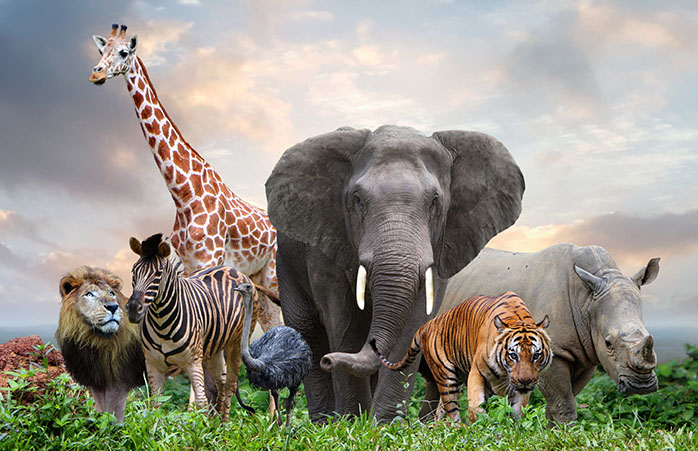
kingdom
Definition
A kingdom is the second highest taxonomic rank in biology, just below the domain. Kingdoms are divided into smaller groups called phyla.
The five kingdoms of living things are:
- Animalia: Animals are multicellular, eukaryotic organisms that can move around on their own. They get their food by eating other organisms.
- Plantae: Plants are multicellular, eukaryotic organisms that cannot move around on their own. They make their own food from sunlight, water, and carbon dioxide.
- Fungi: Fungi are eukaryotes that can be either single-celled or multicellular. They get their food from dead or decaying matter.
- Protista: Protists are a diverse group of eukaryotes that do not fit neatly into the other four kingdoms. They can be single-celled or multicellular.
- Monera: Monera are prokaryotes, which means they do not have a nucleus. They are single-celled organisms that can be either aerobic or anaerobic.
The five-kingdom system of classification is not without its critics. Some scientists believe that there should be more or fewer kingdoms, while others believe that the system is outdated and should be replaced. However, the five-kingdom system is still widely used in biology textbooks and classrooms.
How can the word be used?
The plant kingdom is divided into two main groups: flowering plants and non-flowering plants.

Different forms of the word
Noun: A kingdom is a political entity ruled by a monarch. It is a sovereign state that is not part of a larger political entity.
Adjective: Royal or majestic.
Verb: To give someone or something the status of a kingdom.
Adverb: In a royal or majestic manner.
Etymology
The word "kingdom" comes from the Old English word "cyningdom", which means "realm of a king". It is related to the words "king" and "queen".
The word "cyningdom" is made up of two parts:
"cyning", which means "king".
"dom", which means "domain" or "realm".
So, a kingdom is literally the domain or realm of a king. It is a sovereign state that is ruled by a monarch.
Question
What is a kingdom?
AQA Science Exam Question and Answer
Question:
Define the biological concept of a "kingdom" and explain its role in classifying living organisms. Provide examples of different kingdoms and how this classification system helps scientists understand the diversity of life on Earth.
Answer:
In biology, a "kingdom" is a high-level taxonomic category used to classify and categorise living organisms based on their fundamental characteristics and evolutionary relationships. It is a vital component of the broader classification system that helps scientists organise the incredible diversity of life on Earth.
The classification system consists of several hierarchical levels, with "kingdom" being one of the highest. Organisms within a kingdom share certain key characteristics that set them apart from organisms in other kingdoms. For instance, the five kingdoms commonly recognised are Animalia (animals), Plantae (plants), Fungi (fungi), Protista (single-celled eukaryotes), and Monera (bacteria and archaea). Each kingdom encompasses organisms that share common traits, behaviours, and evolutionary histories.
The concept of kingdoms aids scientists in understanding the relationships between different groups of organisms and their evolutionary origins. For example, the Animalia kingdom comprises diverse creatures from insects to mammals, emphasising the unity and diversity of animals while providing insights into their shared ancestry.
Furthermore, the classification system facilitates communication among scientists by providing a common language for describing and categorising organisms. It enables researchers to study and compare species with similar characteristics and ancestry, helping us unravel the intricate web of life's history and development.
In summary, the concept of a kingdom is an essential tool for biologists to organise and comprehend the wide array of living organisms. It forms the foundation for the larger classification system and aids in understanding the evolutionary relationships and traits that define different groups of life forms.